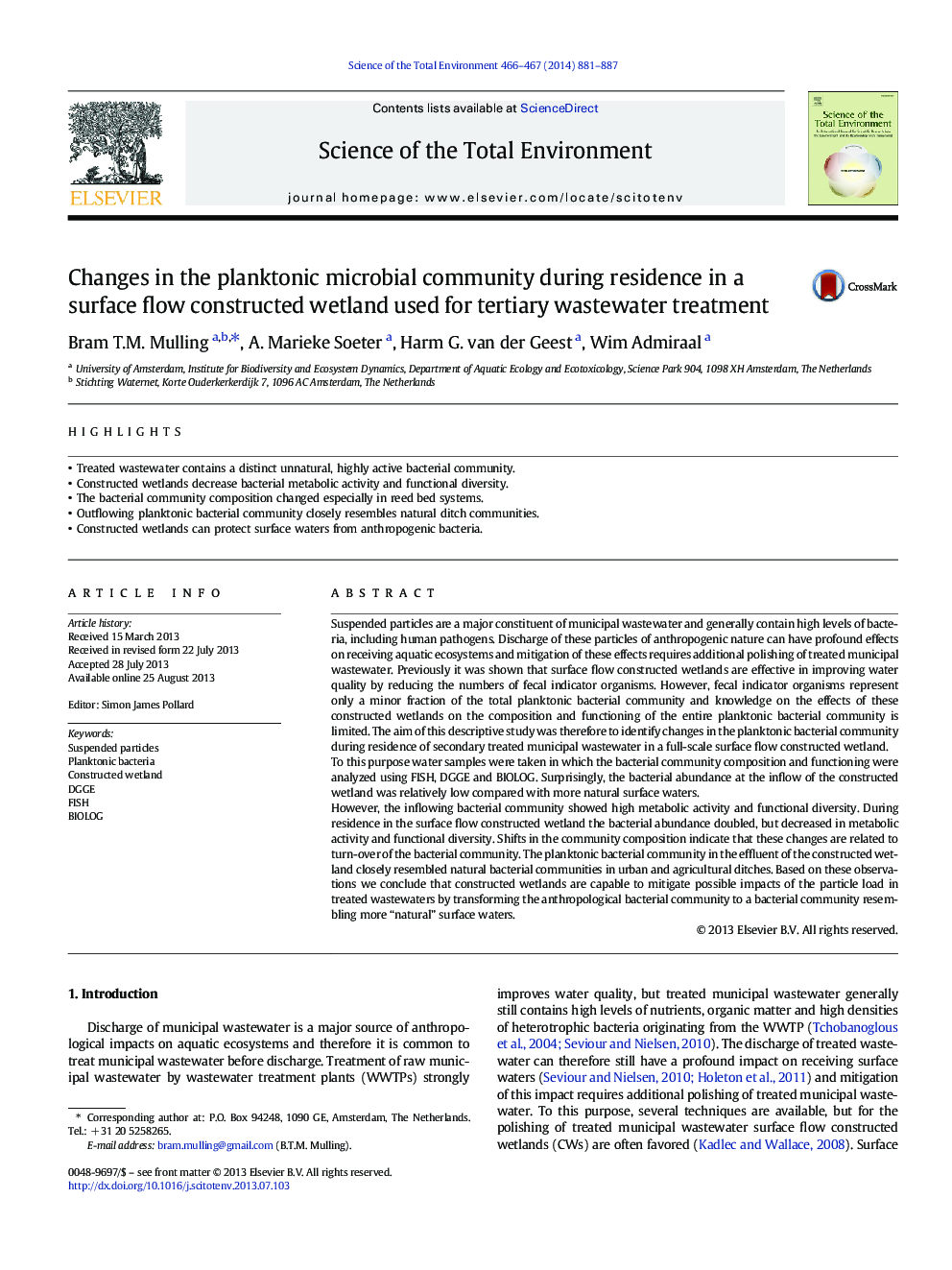| Article ID | Journal | Published Year | Pages | File Type |
|---|---|---|---|---|
| 6332409 | Science of The Total Environment | 2014 | 7 Pages |
Abstract
However, the inflowing bacterial community showed high metabolic activity and functional diversity. During residence in the surface flow constructed wetland the bacterial abundance doubled, but decreased in metabolic activity and functional diversity. Shifts in the community composition indicate that these changes are related to turn-over of the bacterial community. The planktonic bacterial community in the effluent of the constructed wetland closely resembled natural bacterial communities in urban and agricultural ditches. Based on these observations we conclude that constructed wetlands are capable to mitigate possible impacts of the particle load in treated wastewaters by transforming the anthropological bacterial community to a bacterial community resembling more “natural” surface waters.
Related Topics
Life Sciences
Environmental Science
Environmental Chemistry
Authors
Bram T.M. Mulling, A. Marieke Soeter, Harm G. van der Geest, Wim Admiraal,
